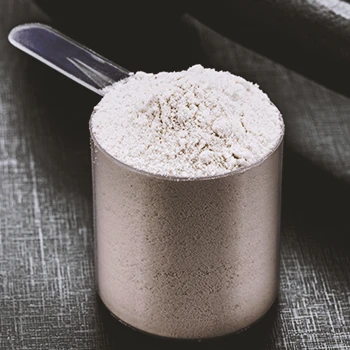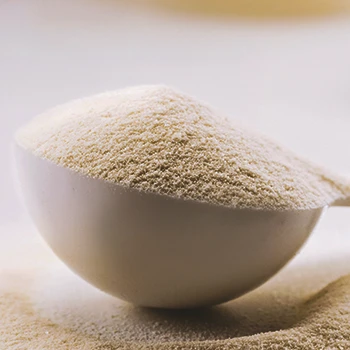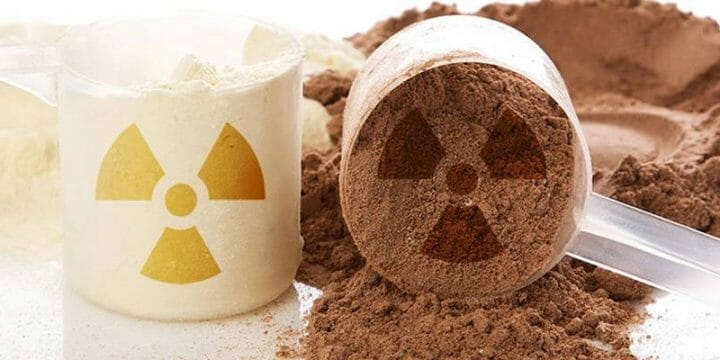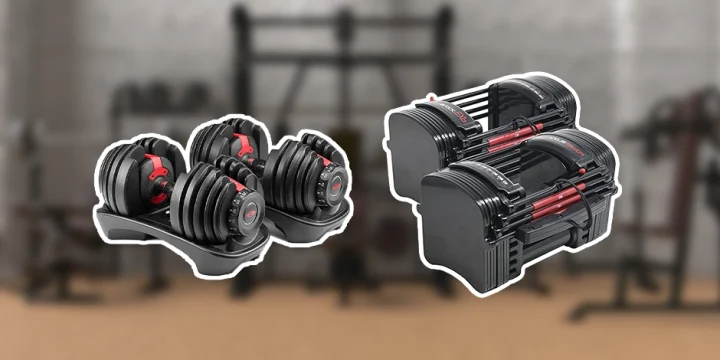Anyone who regularly consumes pre-workouts has at least once come across a tub of clumpy powder.
This, of course, raises concerns as to whether it's still effective or safe to consume. In fact, it's one of the most common questions I get about pre-workouts.
To ease your minds, I've researched and compiled a 'Guide to Clumped Pre-Workout.' It should answer all your questions.
Quick Summary
- Clumping in pre-workout supplements happens because some ingredients absorb moisture. This causes the powder to stick together.
- To fix clumpy pre-workout powder, store your supplements in a cool, dry place. Also, include the silica gel packets.
- According to the National Institute of Health, common hygroscopic ingredients in pre-workouts include citrulline malate, creatine nitrate, and glycerol.
- In my experience, proper use and storage of your pre-workout can almost prevent clumping.
Why Do Pre-Workout Supplements Clump?

Most pre-workout supplements clump because they contain hygroscopic ingredients.
Hygroscopic ingredients are active agents that attract water molecules at room temperature.
As a result, powdered supplements containing these ingredients are prone to clumping.
According to research by the National Institute of Health (NIH), there are some common hygroscopic pre-workout ingredients [1].
These include:
- Citrulline malate
- Creatine nitrate
- Glycerol
Most powdered pre-workouts eventually turn clumpy or hard if you leave them unused for an extended period.
This is enough time for your supplement to draw in moisture and clump up.
How to Prevent It

There are several ways to prevent pre-workout clumping. Here’s what we found works best.
Silica Gel Packets
I learned the hard way that skipping the silica gel packet is a one-way ticket to Clump City. Now, I make it a rule to keep that little packet right in the middle of my pre-workout powder. It's like having a little guardian that keeps the moisture at bay.
Since pre-workout contains hygroscopic ingredients, they will attract moisture from the air.
Silica gel packs prevent the powder from drawing any moisture. So, don't throw it away after you open up your supplement tub.
Stir or Shake Your Pre-Workout
One of the reasons pre-workout powder tends to absorb moisture and clump is when it’s left untouched for long periods of time.
Let’s say you’ve thrown away the silica gel packet and don’t use your pre-workout that often; now, it’s very susceptible to clumping.
So, another way to prevent this is to shake your pre-workout container periodically. While this may sound silly, it works quite well. You may even use a spoon to stir the powder around.
Store In a Cool, Dry Place

I've stored my pre-workout in some pretty humid places before, and let me tell you, it's not pretty. The shelf life drops faster than an opponent after a right hook. Now, I always stash my tub in a cool, dry spot to keep it from turning into a brick.
So, if you live in such a climate, store your pre-workout tub in a cool and dry place.
We also recommend taking extra precautions by adding an extra silica gel packet. This will ensure your powder won’t get clumpy or hard.
Related: Does Pre-Workout Go Bad?
Use Pre-Workouts With Anti-Caking Agents
Look for pre-workouts that contain calcium silicate and silicon dioxide. Research by the Center for Science in the Public Interest says these are anti-caking agents. They absorb moisture and prevent the powder from clumping. [2] However, these agents may affect the product in certain ways, so be careful when choosing them.
“While they are rare, silicon dioxide side effects are possible. This can include symptoms of allergic reactions and possibly digestive problems.”
- Jillian Levy, Certified Holistic Health Coach
Use Your Pre-Workout Regularly
Consistency is key, not just in training but in using your pre-workout too. I make sure to use mine regularly, which means I usually run out before there's even a chance for it to clump. Plus, it's a good excuse to keep pushing yourself in the gym.
How to Fix Pre-Workout Clump

If your tub of pre-workout turns clumpy, there’s no need to worry. You can fix a clumpy pre-workout immediately in the following ways.
Use a Blender
If you find your pre-workout has clumped, simply toss the entire batch into a blender and mix it until it’s all powdery again.
And, don’t worry; blending won’t affect the pre-workout in any way, shape, or form.
Stir It With a Spoon or Fork
If you don’t have access to a blender, then stirring clumpy pre-workout with a spoon or a fork until it’s powdered will do the trick.
Just make sure you use a bone-dry spoon; otherwise, the moisture might clump your pre-workout aga
Alternative Uses for Clumpy Pre-Workout
Clumpy pre-workout powder, often seen as a nuisance, can be repurposed creatively:
- Energy pancakes: Mix the clumps into your pancake batter for a boost. The texture can add an interesting twist while providing a caffeine kick to start the day.
- Pre-workout coffee: Mix clumps into your morning coffee or espresso for a unique, energizing brew. It's an unconventional way to infuse your caffeine boost with workout enhancers.
- Fruit-filled popsicles: Dissolve the clumps in a fruit puree or juice and freeze in popsicle molds. These icy treats become a refreshing pre-workout snack, ideal for hot days.
- Homemade energy chews: Combine the clumps with honey or maple syrup, shaping them into chewy energy snacks. These are convenient for on-the-go pre-workout fuel during hikes or long runs.
- Flavored water enhancer: Crush the clumps into a fine powder and use it to flavor your water. It's a quick and easy way to infuse your drink with energy-enhancing ingredients while staying hydrated throughout the day.
These ideas make clumpy pre-workout powder enjoyable and useful. They are now a fun part of your daily routine.
FAQs
Is Clumpy Pre-Workout Bad for Consumption?
No, clumpy pre-workout is not bad for consumption because it doesn’t affect the quality or effectiveness.
However, make sure the clumping is a result of moisture absorption. If you suspect some other foreign ingredient has gotten into your tub, chuck it out.
When Should I Be Concerned About Clumpy or Hard Pre-Workout?
You should be concerned about clumpy or hard pre-workout when the supplement is past its expiration date or has been exposed to unknown substances.
Otherwise, clumpy pre-workouts are harmless.
References:
- https://www.ncbi.nlm.nih.gov/pmc/articles/PMC6413194/
- https://www.cspinet.org/article/silicon-dioxide-silica-calcium-silicate
About The Author
You May Also Like






